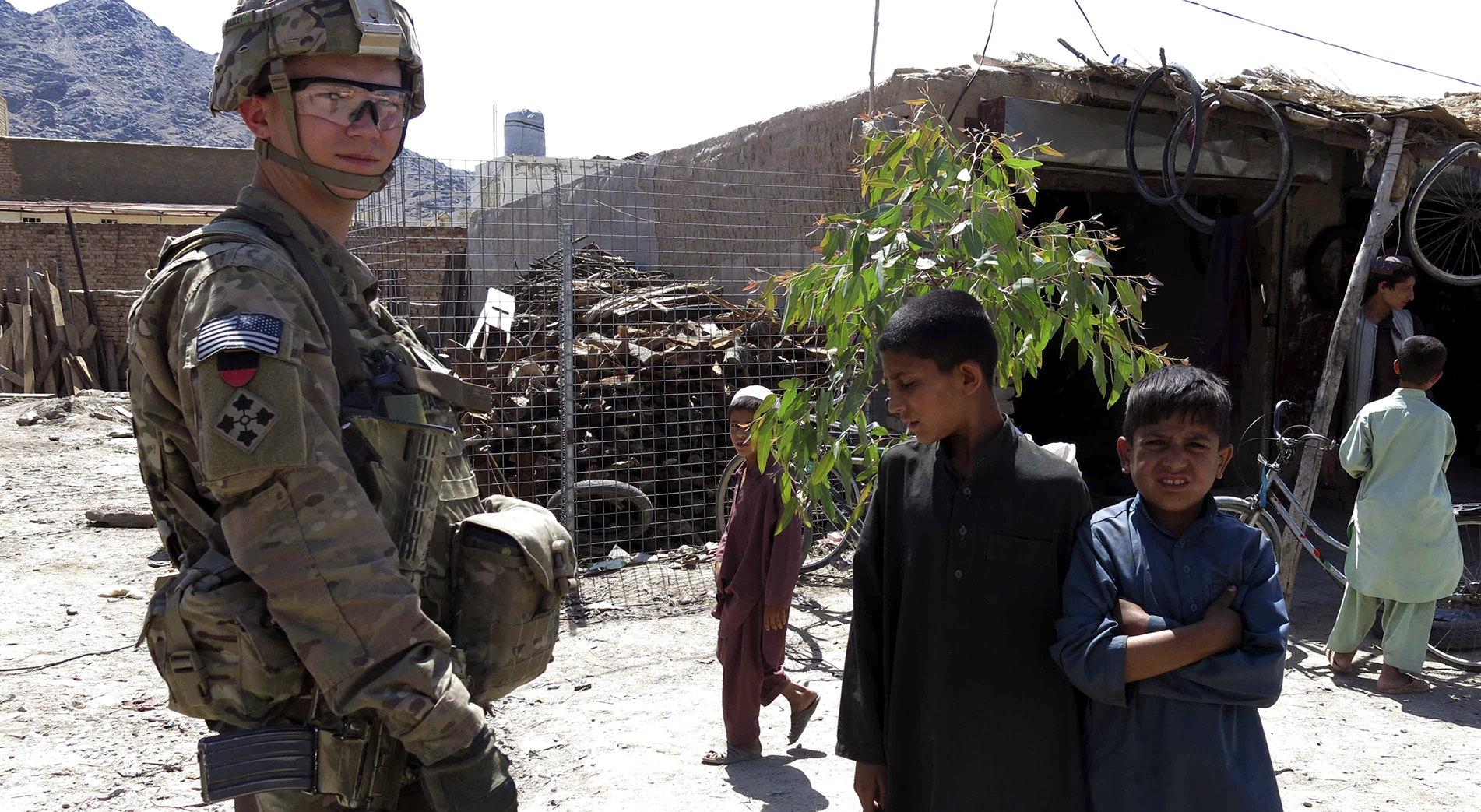News
Afghanistan (Part Three): What can be done now by outsiders and donors?
In the last article of this three-part series following his return to Afghanistan, Greg Mills asks whether it has all been worth it and determines the likely path out of conflict.

See Part One here: The Mayor of Kabul and Part Two here: The Saudi Arabia of Lithium
Donors are caught in a bind in Afghanistan. But it is a bind that ties.
The West and its Afghan partners have made an extraordinary commitment to stabilising the country since 2001. Some 3,500 Nato soldiers have been killed and $1-trillion expended on military operations, building up the Afghan security forces, and development assistance. More than 200,000 Afghans have been killed, including 60,000 members of the police and army.
The problem from the outset is that the West lacked a strategy — a carefully integrated approach for Afghanistan which sought to address security, governance, economic and social issues over the long term. Without a clear strategy from the beginning, Nato, led by the US, was always going to be making it up as it went along and the situation demanded.
The immediate post-9/11 aim to mortally wound al-Qaeda and thereby remove them as a terrorist threat by toppling their hosts, the Taliban, from power, was quickly — if only temporarily — achieved. This mission was converted into a state-building exercise; one far more complex and demanding in terms of troop levels, financial commitment and, critically, duration. The longer the West stayed, and the more places they engaged with, the more this became a counter-insurgency operation as the Taliban picked itself up, and fought on in the absence of a political alternative.
The West was handicapped from the start by an absence of a long-term, carefully thought through and properly resourced plan. “I felt like we were high school students who had wandered into a Mafia-owned bar,” said General Stanley McChrystal on his arrival in Afghanistan in 2002.
This saw Nato troops deploy to places like Helmand, strategically irrelevant until they were provoked to aligning to the Taliban cause. It resulted in the fighting of 1,000 battles linked only to each other by a common, external enemy in a country famous for its tribal fractiousness and geographic impassability.
The Iraq invasion did not help. It compounded all the early problems of light footprints and minimal commitment, by taking the West's eye off the Afghan ball.
In this state-building mission, aid was both badly and well spent.
The National Solidarity Programme conceived by the government and financed by the World Bank successfully rehabilitated thousands of rural villages. Yet high-profile attempts to rebuild critical infrastructure from dam projects to electrification, fell foul of an axiomatic combination of chronic corruption and insecurity. These two tendencies were linked by pernicious self-interest as those who provided security created their own demand. And there were stupid and costly mistakes, none more so than Nato choosing to go to Helmand, but including the overlapping seed distribution programmes in Kandahar, which became schemes for corruption, confusion and, ultimately, donor self-defeat. The positive security effect of a surge of seed money was soon overtaken by the frustration of production without income.
But there has been tremendous overall development progress, even if measured against the unrealistic utopia of 2001. Education, communication, gender equality and basic services have transformed. Some of this is to do with donors, and some is the result of modern technologies, notably cellphones. The Taliban had unplugged Afghanistan from the world; it is now back online.
With peace talks falteringly under way in Doha, the failures and frailties matter. The Taliban is on the ascendancy, precisely because the initiative passes when your opposition are having to conform to your actions. This is amplified by the United States' wavering commitment to keeping troops in Afghanistan, a division which encourages the Taliban and its backers. With a sniff of weakness, the Taliban are upping the security ante with an increase in bombings in Kabul and a long winter campaign against government troops.
In part the failures were simply down to the fact that countering any insurgency is difficult, and fraught with setbacks. It is nearly impossible to establish trust at gunpoint, and the more you fight, the less so.
What can be done now by outsiders and donors?
The first answer lies in renewed commitment. This is imperative to the success of any peace talks. You sit down with the enemy because one or both parties have come to the difficult conclusion that another, peaceful way has to be found to resolve an outcome. If you are still up for the fight, have the will and the wherewithal to do so, then you go into talks to find out how strong the will of your opponent is. This is not to find a cease-fire then, but to gain a military advantage. This is where the Taliban is today, on the trail of a dying animal in the West's commitment.
The West's military and diplomatic tracks have not been well integrated, and yet this strength is essential for negotiating success. Just as the US attempted to negotiate with North Vietnam from a position of declining military strength, so too has Washington attempted the same with the Taliban. The result in Vietnam was dire for the US: A communist takeover of its South Vietnamese ally within 24 months. Yet the consequences for the West of a Taliban-dominated Afghanistan are as dire as they were 20 years ago. These regimes, and the problems they cause, tend not to stay at home. As President Ashraf Ghani put it to me, “We are not asking the international community for charity, but for a partnership based now on mutual interest.”
The second aspect to ensure success is to align the region. This tough issue cannot be avoided so long as peace remains the ambition. While Pakistan continues to operate a policy of “strategic depth”, meaning in essence it pushes its areas of control away from its own territory, Afghanistan cannot ensure its own future free from interference. Islamabad's policy has, in turn, been predicated on its relationship with India, an insecurity born out of partition and asymmetric economic, diplomatic and military capacity. Not for nothing was Osama bin Laden given succour in Abbottabad.

If Afghanistan sees its problems through a Pakistani lens, Pakistan sees all its problems through an Indian lens. Pakistan is no doubt looking at what kind of government in Kabul will be more or less friendly to Delhi. This requires finding a way to frame the need for stability in Afghanistan as more favourable to Islamabad's interests than a Taliban regime.
Dealing with this, and thereby stabilising Afghanistan, requires a level of diplomatic commitment that goes beyond the usual earnest intentions, stern expressions, thoughtful statements, special envoys and concerned committees. It should join Pakistan's wider Middle Eastern allies into this concerted effort. It demands engaging with China, not least given its stake in the success of the Belt and Road Initiative, and Afghanistan's other Central Asian neighbours.
Third, there is an imperative, still, to understand what makes things work in the economy in trying to find the means to make them work better. Aid should have been better spent. But there is no better time to start doing this than now, given the ongoing talks with the Taliban and the imperative to integrate the security, political and developmental aspects.
The popular trope of the Afghanistan conflict as “endless”, as Donald Trump was fond to refer to it, or perpetual, supposedly innate to a region's history or cultures, is misleading. The notion that they are endless makes policymakers and citizens spectators rather than participants capable of shaping the outcome.
Conflicts are the result of misrule and violent interventions. They are a political choice. As such, they can be put right. There is a need to integrate, not prioritise, war, politics and development. For all the undoubted development effect improved security can provide, the absence of war is not peace, as defined by social conflict, economic opportunity and political inclusion. To act differently requires commitment and building an economy outside of donors.
This demands some vision, along with dollops of political will, in both Afghanistan and the region, where until recently, economic activity has been looked upon as a zero-sum game. “The challenge is that the Taliban,” says Afghanistan's First Vice-President Amrullah Saleh, “is so obsessed with the cookie, that no one has been able to divert their attention to the pie — the larger economic dividend if we can agree to a pluralistic system. They are too narrowly focused to see the pie. For it not to become a fight over booty, we need a vision and international commitment.”
For all of its attention elsewhere, on Corona, China and the Middle East to name a few distractions, unless it cares less, the West should once more step up to provide the critical support infrastructure that will allow the Afghan military to be able to exert pressure at a time when and where it chooses. This could extend the Taliban's moment of “victory” well beyond a lifetime, and in so doing would ensure that it is rational and serious about resolving its differences with the rest of Afghanistan.
Patience remains, on all sides, the toughest warrior.
This article was originally published on The Daily Maverick.


